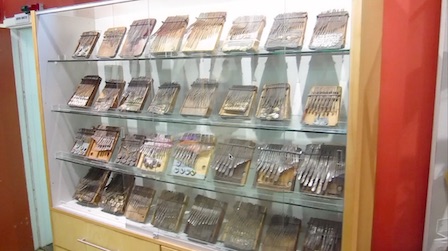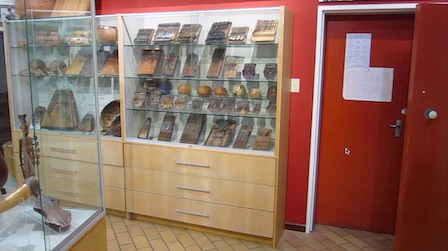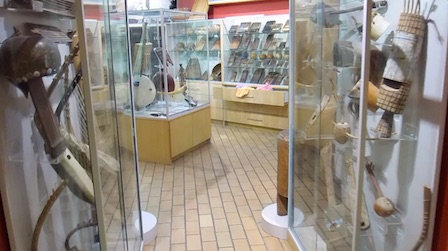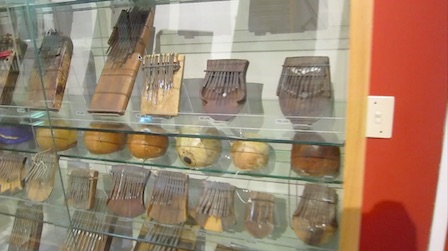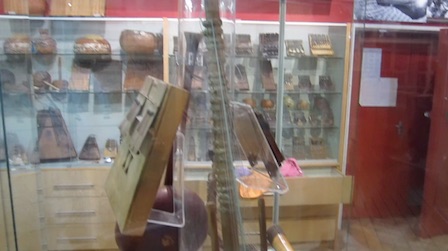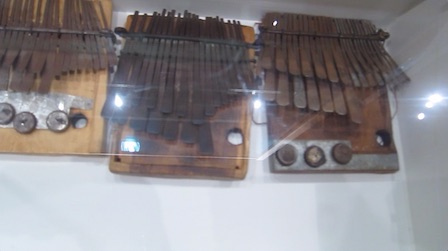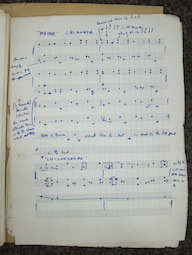Making the ILAM mbira archive audible
In May 2017, ethnomusicologist Jocelyn Mory, their research partner Zack Moon, and sympathetic-resonances.org creator Stefan Franke met with Andrew Tracey at the International Library of African Music (ILAM) in Grahamstown, South Africa.
Following up on our previous joint effort of adding Matepe to the website, we started a project to make Prof. Tracey's archive of musical transcriptions from his field research and publications, as well as the great variety of mbiras and tunings in the Tracey Instrument Collection (TIC) audible and accessible to the world.
With the kind permission of ILAM director Lee Watkins and support by Elijah Moleseng Madiba and the wonderful staff at ILAM, we created key-by-key recordings of 70+ instruments. Basically all which were reasonably in tune - and most of them still sound amazing.
This fascinating diversity of instruments (matepe, nyonganyonga, 'big' karimba, njari [huru], mana embudzi, mbira dzaVaNdau, mbila dzamadeza, ...) is hardly ever heard on recordings, except for the ones the Traceys made.
Andrew Tracey's transcriptions mainly come from his field trips (e.g. Rhodesia & Mozambique 1969/70) and comprise all major types of mbira from Zimbabwe, Mozambique, Malawi and South Africa.
This website's playback engine makes those materials audible, sometimes in the very same tunings as on the historical recordings. Transcriptions are directly editable, and can be translated across different mbira types, which may make them approachable even to non-players of the instruments.
Ongoing publishing
As of December 2020, the almost all Matepe / Hera, Nyonganyonga and 'big' Karimba transcriptions (about 70 pieces) are available online, in large part through the work of Zack Moon, who also meticulously added metadata about people, locations and related field recordings. Publishing Njari pieces is ongoing, about 10 of 35+ pieces are online.
Sign up to the website to access all public content.
Join us
Adding the TIC as virtual instruments to the website is an ongoing effort, run by a group of volunteers. Slicing another instrument sample requires no more than a computer, some free software, a pair of headphones, a basic understanding of digital audio, and an hour of spare time.
If you are interested in joining our team, please get in touch!
Future roadmap: Accessibility and repatriation
ILAM's repatriation efforts aim at disseminating one of the largest archives of African music in sub Saharan Africa within its communities of origin. In her 2011 paper "Performing the archive [...]", former ILAM director Diane Thram advocates "for archives to make heritage activism part of their mission. I urge that ethnomusicologists, musicologists, music researchers in general and archivists be creative in devising research projects that include community outreach and education aimed at continued performance of the music by future generations."
An essential part of Sympathetic Resonances' roadmap is turning the site into an app running on cheap smartphones (which soon will be ubiquitous, even in remote areas). Besides other media, the app will for the first time make musical transcriptions and tunings approachable in innovative ways.
With a focus on the next generation of learners, a visual interface will allow even young school children to learn (and enter) music without the need for notation. Apps and their marketing methods (microtargetting) also bear potential to to address large target audiences very cost effectively.
Creating this app is a major development effort, and we are actively looking for funding. If you are interested in supporting this project, or in starting work on a similar one, get in touch!
